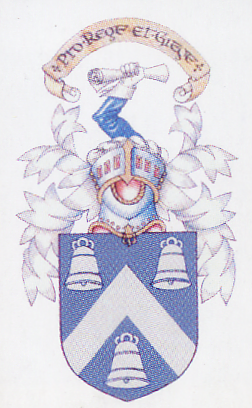
The Madras College Archive

|
|
The Madras College Archive |
|
|
Former Pupil Biographies
Professor Edmund Hirst (1898-1975)
Of Hirst's massive contribution to research it is possible to give only
the merest outline. While at St. Andrews he made notable contributions to
the chemistry of cellulose and the structure of the simple sugars. In a
classical paper he demonstrated for the first time the six-membered ring
structure of an aldose derivative, thereby laying the foundation for the
rigid determination of the structure of many mono-saccharides. The
partnership of Hirst and Haworth at Newcastle and Birmingham succeeded in
elucidating the main structural features of many disaccharides and
practically all the known naturally occurring polysaccharides. The most
spectacular success, in conjunction with Haworth, was the establishment of
the structure and the synthesis of vitamin C, which was the first
synthesis of a vitamin. Subsequently over a long period of years, at
Bristol, Manchester and Edinburgh, Hirst led and inspired teams of
research workers in investigations into the chemistry of the
polysaccharides, hemicelluloses, gums, mucilages, and seaweeds. How great
was his influence in this field is reflected in the July 1968 issue of
'Carbohydrate Research' which was dedicated to him on his 70th birthday
and contained contributions from research workers who had been his
scientific associates. The Madras College Magazine for June 1933 reports: It was announced recently that Dr. E. L. Hirst.
M.A.. F.R.S., has been appointed Professor of Organic Chemistry in t he University of
Bristol. Dr. Hirst is an "Old Boy" who entered Madras College
in 1910 during the headmastership of Mr. John McKenzie. He remained at
the. College until 1914, being Dux in his final year, and then proceeded
to the University of St. Andrews, where he gained in succession the
degrees of M.A., B.Sc. and Ph.D. At this stage he commenced a long
continued association with Professor W. N. Haworth. F.R.S., in
research work on the structure of carbohydrates. After being Assistant in
Chemistry in St. Andrews under Principal Sir James Irvine, Dr. Hirst held
a post on the staff of Manchester University. From there he moved to
Armstrong College, Newcastle-upon-Tyne, and later to the University of Birmingham. where he now has the position of reader in the Chemistry of
Natural Products. The investigations into the chemistry of cellulose,
starch and other carbohydrates carried out in Prof. Haworth's
laboratories in Birmingham have attracted world-wide attention and Dr. Hirst has
been intimately associated with the direction of this work. One
of the most interesting investigations carried out by Dr. Hirst and his
collaborators resulted in the discovery some three wars ago of the
chemical constitution of Vitamin C. On account of the valuable and
important contributions he had made to the science of Organic Chemistry
Dr. Hirst received in 1934 the special distinction of election to the
Fellowship of the Royal Society.
|
||